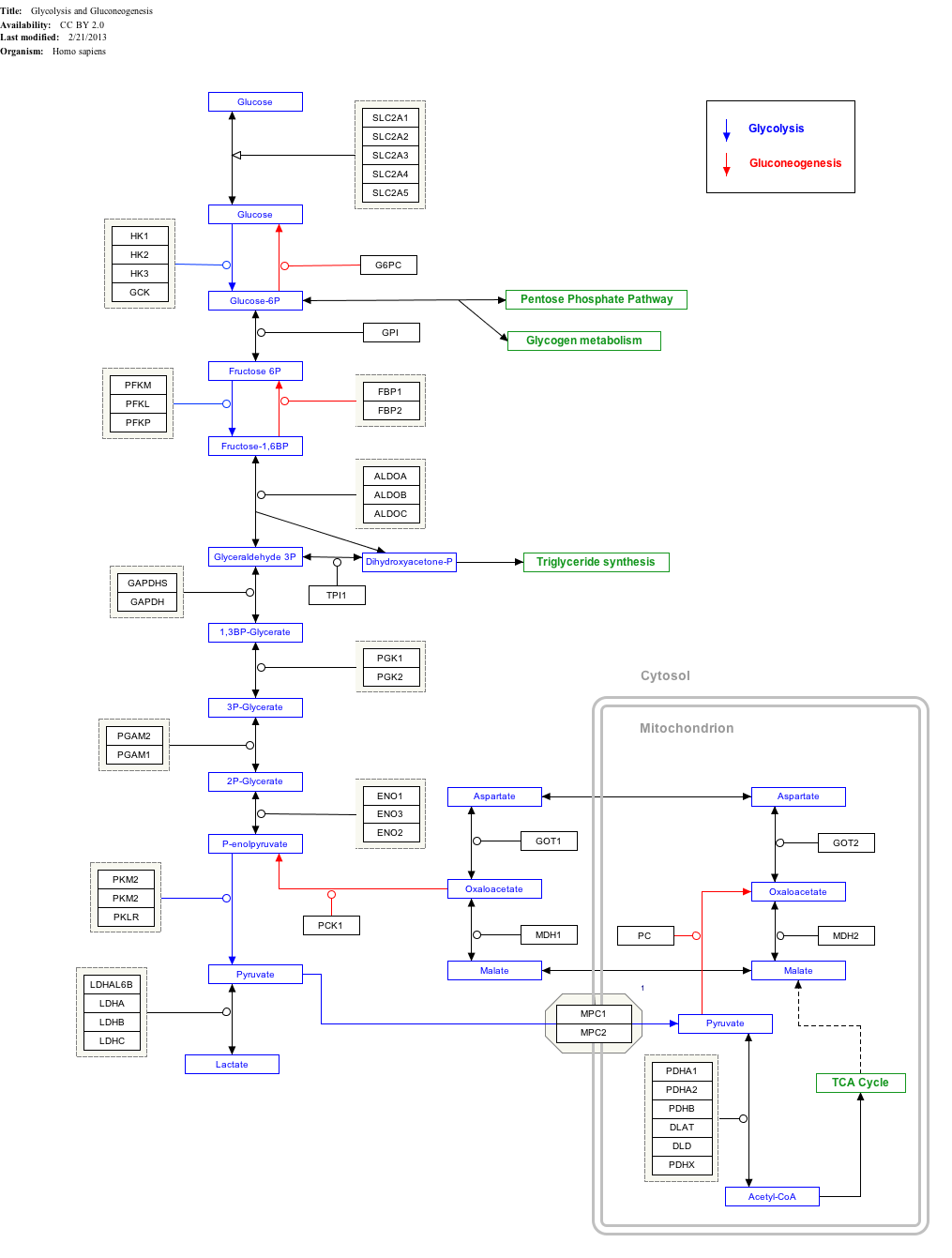Top Qs
Timeline
Chat
Perspective
Mitochondrial pyruvate carrier 2
Protein-coding gene in the species Homo sapiens From Wikipedia, the free encyclopedia
Remove ads
Mitochondrial pyruvate carrier 2 (MPC2) also known as brain protein 44 (BRP44) is a protein that in humans is encoded by the MPC2 gene.[5][6][7] It is a member of the Mitochondrial Pyruvate Carrier (MPC) protein family.[8] This protein is involved in transport of pyruvate across the inner membrane of mitochondria in preparation for the pyruvate dehydrogenase reaction.[9]
Remove ads
Interactive pathway map
Click on genes, proteins and metabolites below to link to respective articles.[§ 1]
Glycolysis and Gluconeogenesis edit
- The interactive pathway map can be edited at WikiPathways: "GlycolysisGluconeogenesis_WP534".
Remove ads
Clinical significance
Mutations in the MPC2 gene cause an autosomal recessive disease comparable to the symptoms of Mitochondrial pyruvate carrier deficiency (MPC1 gene).[10] The symptoms associated with mutations in the MPC2 gene include early-onset neurological problems, normal lactate/pyruvate ratio (however both lactate and pyruvate are in higher than normal concentrations), lactic acidosis, hypotonia, cardiomegaly, and facial dysmorphia.[10]
Remove ads
See also
References
Further reading
Wikiwand - on
Seamless Wikipedia browsing. On steroids.
Remove ads






